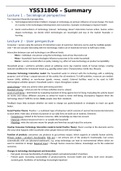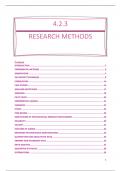College aantekeningen
YSS31806 - Lectures Consumer Technology and Innovation
Lecture summary of the course Consumer, Technology and Innovation (YSS) at Wageningen University (WUR). Slides included as examples to give an extensive overview.
[Meer zien]






